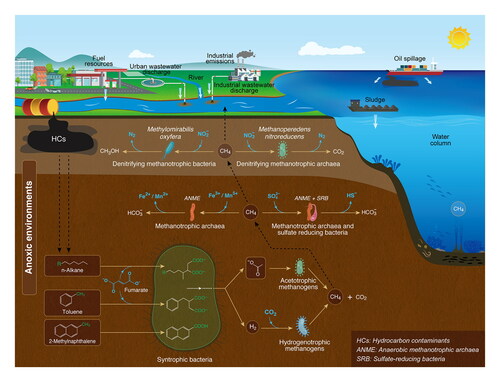

The extensive use of organic chemicals has resulted in the widespread distribution of hydrocarbon contaminants (HCs) in many ecosystems on a global scale. Many subterranean ecosystems can rapidly become anaerobic or even methanogenic following hydrocarbon contamination. Bacteria and archaea dominate communities in such systems and mediate the syntrophic processes that transform HCs into methane (CH4). The resulting CH4 is oxidized by anaerobic bacteria and archaea, either jointly or individually, in the presence of electron acceptors (e.g., sulfate, nitrate, nitrite, manganese, or ferric iron), a process that reduces CH4 emissions and, as a result, contributes to climate change mitigation. Although the possibility of the syntrophy of bacteria and archaea in the anaerobic transformation of HCs and methane oxidation is widely established, the specific pathways and syntrophic taxa involved are poorly understood. This paper reviews the syntrophy of bacteria and archaea in anaerobic HC degradation, with a focus on methanogenic processes. In addition, we discuss the role of bacteria and archaea in the anaerobic oxidation of methane (AOM) and its environmental significance. Given that much of the biotransformation of HCs driven by methanogenic and methanotrophic processes remains unknown, we propose a way forward to discover novel syntrophic partners and metabolic pathways in such anoxic systems.
Attachment Download: